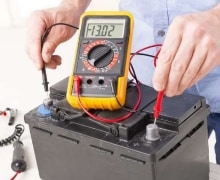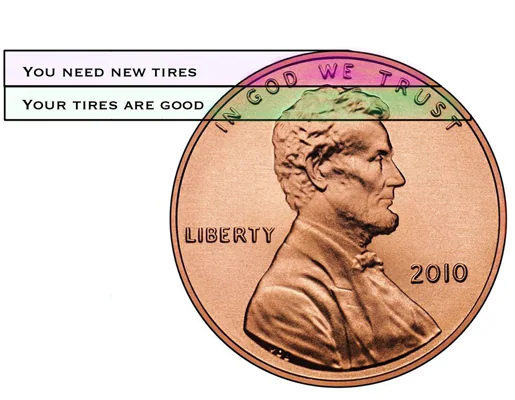As the season is changing, it is essential to perform a few simple services to make sure that your car is healthy. We recommend checking your battery, changing your antifreeze, and checking your tires. Here are a few tips to ensure you know how to check your vehicle when you need to.
Checking your own battery may seem daunting but it’s actually a simple task. You’ll need a special tool called a Voltmeter. This tool is available in most places that sell parts. Before you begin testing, make sure that your vehicle is off including the lights. Connect the red (positive) voltmeter lead to your car’s red(positive) terminal. Connect the black(negative) voltmeter lead to your car battery’s black(negative) terminal. You will want to check the levels of your battery to make sure they are okay, a 12.4 voltage is good, a 12.6 voltage is good. Anything lower than a 12.2 voltage means you need a new battery. Once you have checked your battery, you will need to remove the test leads. Start with the negative(black) lead first. Then remove the positive(red) lead. A good battery is 4 years old or newer and holds its charge. A bad battery is a battery that will not hold a charge and is probably older than 4 years. It is important to check your battery at every change of season. The extreme heat of the summer and the frigid cold winters can take a toll on your battery. It is always important to take the time to check so that your car battery doesn’t let you down.
Changing your antifreeze is important to ensure that the fluid stays at peak performance. Over time, the Antifreeze can break down and become diluted and therefore inefficient at keeping your engine from freezing. Most BMWs need new coolant ever 4 years or 100,000 miles. If you are close to this threshold, it may be time to see your BMW Service Advisor to schedule an appointment to have your antifreeze changed. Maintaining your fluids properly is an essential and simple task that could save you thousands of dollars in the long run.
Checking your tread depth and tire pressure may be one of the easiest things you can do to ensure that your vehicle is prepared for the incoming chilly weather. To check your tread depth, there a few easy ways to do this. The first, using a penny, will not give you an accurate and actual measurement on how your tires tread depth is but more of a general idea. To do this, take a penny and place it in your center tire tread with Lincoln’s head down. If the tire covers Lincoln’s hair, your tires are alright. If they do not, you may need new tires. The other tire tread test that you could perform is to use a thread gauge. You place it between two treads and take a measurement. The ideal tread depth is 4/32nds of an inch. Checking the tire pressure is even easier. When you check the tire pressure, all you need is a tire pressure gauge. The first thing to do, is open the driver door and look in the door jam for your recommended PSI. You can also check the owner’s manual. Once you know your vehicle’s suggested PSI, take your tire pressure gauge to one of your tires and remove the valve stem cap, press the tire pressure gauge onto the valve stem and read the pressure. If the pressure does not match what is suggested, fill the tire to the correct pressure.
If you have any questions about maintaining your vehicle, the service team at BMW of Bridgewater will be happy to help. Feel free to give us a call to schedule your appointment at (908)287-1800. We look forward to seeing you!



